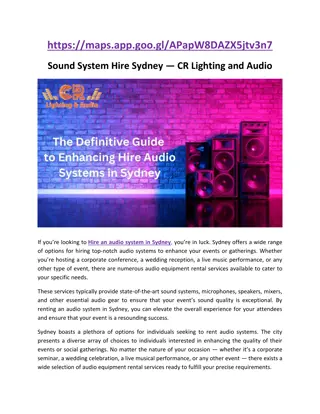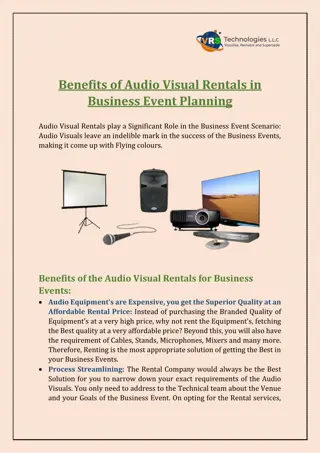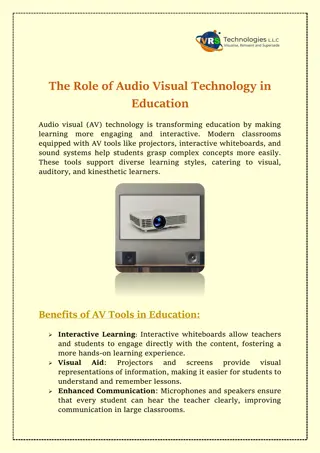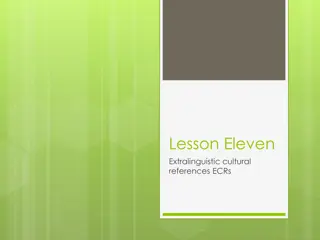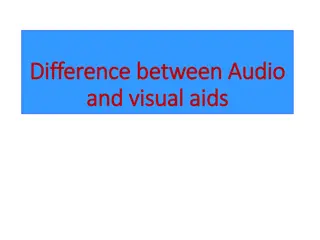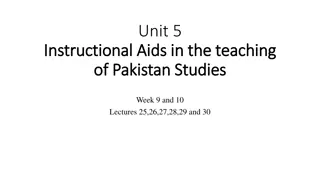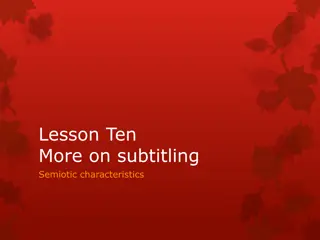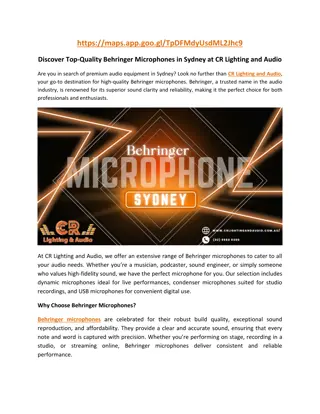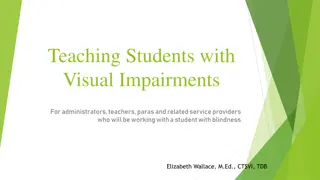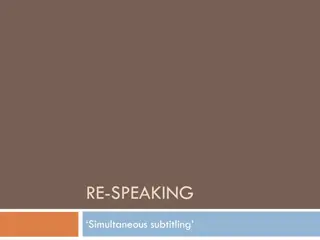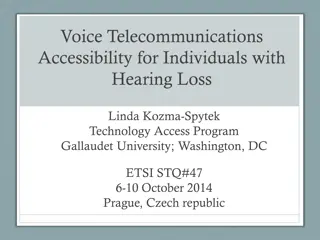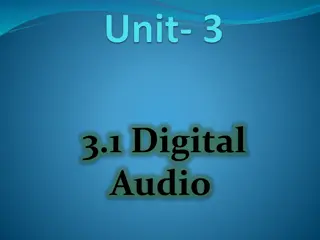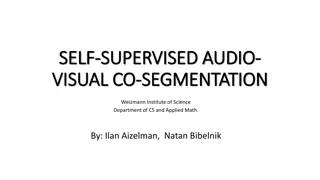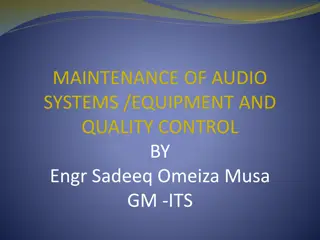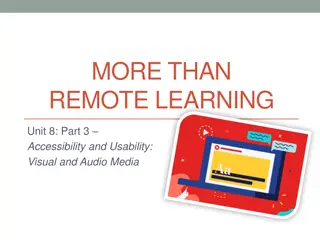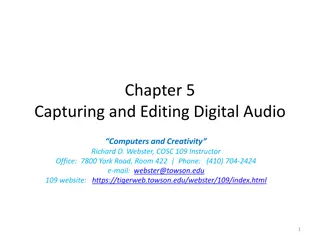Understanding Subtitling in Audio-Visual Content
Subtitling is a crucial aspect of audio-visual content, providing translations or captions at the bottom of the screen. This process involves careful control of content, time, and space elements. Subtitlers require specific qualifications like linguistic expertise and audio-visual sensitivity. Different types of subtitling, constraints, and a code of good practice exist in this field. Explore the nuances of subtitling in this comprehensive guide.
Download Presentation

Please find below an Image/Link to download the presentation.
The content on the website is provided AS IS for your information and personal use only. It may not be sold, licensed, or shared on other websites without obtaining consent from the author. Download presentation by click this link. If you encounter any issues during the download, it is possible that the publisher has removed the file from their server.
E N D
Presentation Transcript
Subtitling Definition: They are simply a translation [appearing] at the bottom of the screen during the scenes of a motion picture or television show in a foreign language (Merriam Webster Online). A written representation of the audio channel in a TV program, a film or a video which is time- coded in sync with the audio. Subtitles are timed-transcription (closed captioning) or translation. Subtitle translation is an inter-lingual and inter-semiotic transposition: From one set of signs to another, from one medium to another, from spoken to written text.
The process of subtitling involves controlling four key elements: Content of the AV material, Time, & Space Context of the AV material The Source text is called Script or Dialog
Types of Subtitling: Interlingual Subtitling Intralingual Subtitling: Intralingual subtitling is able to render the dialogue in the same language along with additional information on the auditory elements of the soundtrack
Who are subtitlers? What qualifications? Having the translator/subtitler competence Audio-visual sensitivity Access to various information resources (texts and/or experts) Able to work individually or part of a team. Working professionally
Code of Good Practice of Subtitling Code of good subtitling practice is endorsed by several subtitling companies in Europe under the European Association for Studies in Screen Translation; you may download it from: http://www.esist.org/Code.pdf
Different Types of Constraints: Different Types of Constraints: Linguistic: Register and genre in spoken language Shortening the text while keeping it coherent Initials and acronyms Shortened version of words Pragmatic omissions - exclamations, vocative words, emotive words, and any sounds that are evident from the audio-visual channel
Technical: Time-coding ( spotting ) Length and number of lines (Number of characters in 6 seconds rule?) D Ydewalle et al. Max. 32 characters per line, 64 per subtitle J. D az Cintas & A. Remael Max. 37 characters per line, 74 per subtitle Netflix Max. 42 characters per line, 84 per subtitle Higher number of characters = higher reading speed Subtitle duration ( What is the usual required subtitle presentation rate?) Cps: 10, 12, 15, 16 and 17 Wpm: 160, 180 and 200 Characters per minute: 820-850 Unspoken text (written or shown on screen) Simultaneous speech of two or more speakers Translating from hearing when script isn t available
Cultural: Cultural nuances, metaphors and word games You are the best, man! Translated you are the best-man! (at a wedding). Model Naomi Campbell threw a Blackberry on her housekeeper Translated: blackberry (the fruit, NOT the mobile phone) Errors as a result of a missing cultural knowledge: Conversions (weight, length etc.) (parsec), pound, dinar vs. dolar Subtitles as a means for literacy Ability to use the right register/genre for the specific speaker and/or context
The Advantages and Disadventages of Subtitling Advantages of Subtitling Disadvantages of Subtitling not expensive contaminate the image do not take a long time greater loss of information due to the compression have a role in language learning the attention of the audience is split among image, soundtrack and subtitles original soundtrack is preserved is better for hard-of- hearing and the deaf


